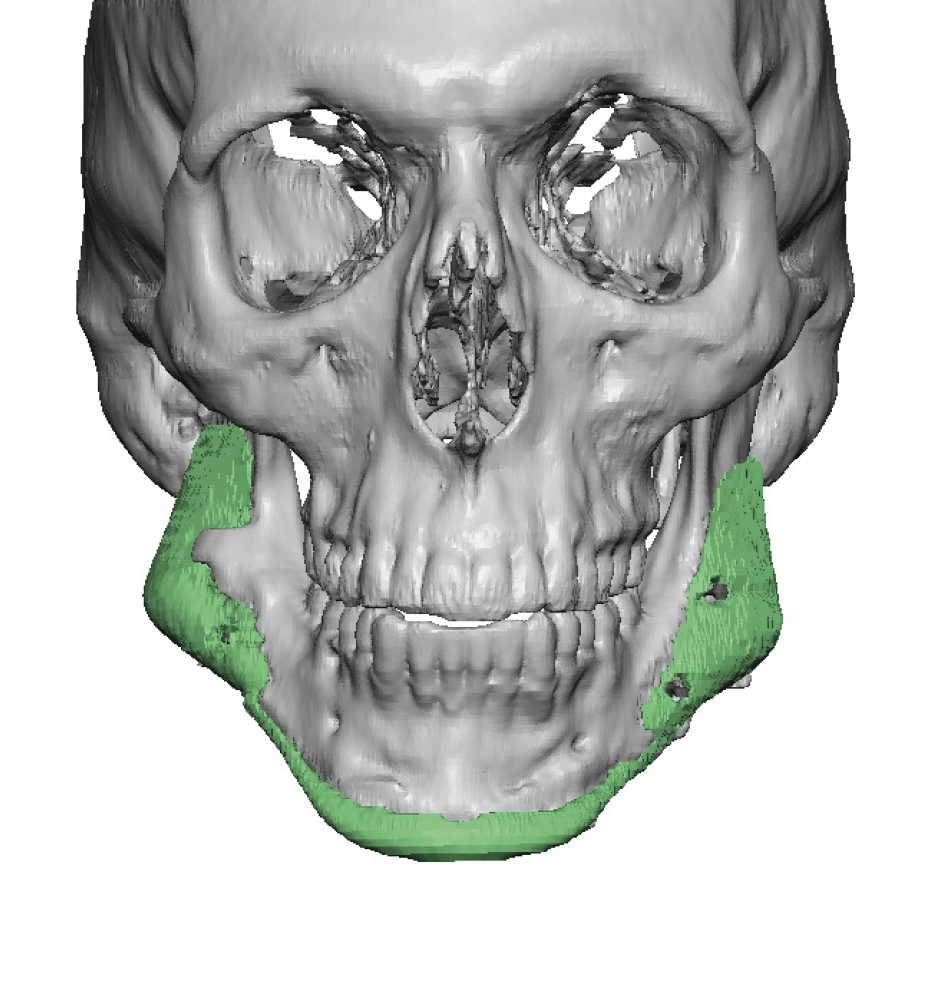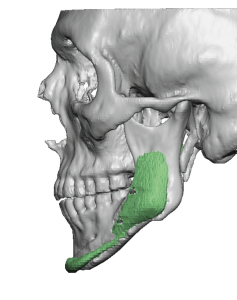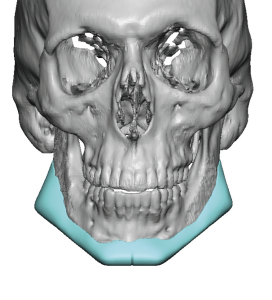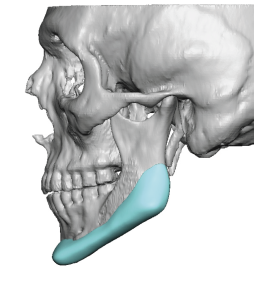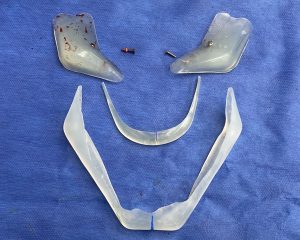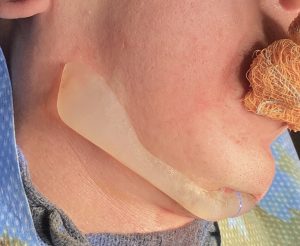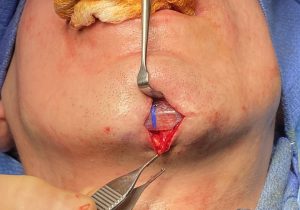Background: The most common methods of lower facial (jawline) augmentation are either non-surgical temporary injectable fillers or permanent surgically placed implants. The use of standard chin and jaw angle implants offers a convenient option for permanent jawline augmentation that requires no significant presurgical preparation with fairly low implant cost. It is also the surgical jawline augmentation technique of which surgeons are most familiar.
But the piecing together of three standard implant shapes at the corners of the lower jaw (chin and jaw angles) for a total jawline effect is not without aesthetic complications. With the placement of three separate implants that have no related connection it is not a surprise that implant asymmetries are common, not only at the paired jaw angle areas but with the singular chin implant as well. This becomes more evident if there are some often overlooked jawline bone asymmetries which may not be particularly evident by an eyeball assessment alone.
The definitive treatment for an asymmetrical or undesired standard jawline implant result is a custom design approach. Besides providing a singular connect implant that wraps around the entire jawline, the preoperative design process uses the existing implant positions and sizes to help create a new implant effect that can come closer to the patient’s desired result.
But it is also important to be aware that the existing implants will pose some technical challenges during the placement of a new jawline implant. The existing implant removals may seem relatively easy if they are solid silicone. But the presence of scar tissue (capsular tissue) and bony overgrowths from the indwelling implants will need to be managed prior to inserting the new implant.
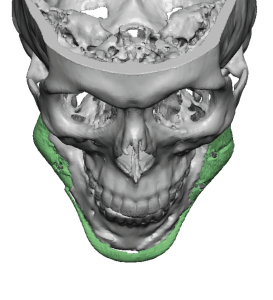

To appreciate the differences in the new jawline implant design it was overlaid on the existing implants to see the difference. This illustrates the principle that when you know what does work it is then easier to determine what will work better.
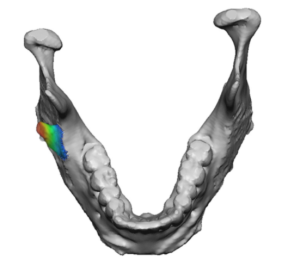
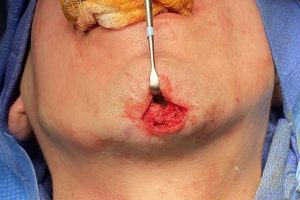
Case Highlights:
1) The custom jawline implant is the natural progression from the unsuccessful use of standard chin and jaw angle implants for total jawline augmentation.
2) While the indwelling chin and jaw angle implants do provide some established pockets they also induce scar formation as well as areas of bony overgrowths/irregularities that must be removed for the placement of a new custom jawline implant.
3) One of the keys in jawline implant replacements is to remove the capsule on the bone to establish a fresh bone-implant interface. In the chin the implant capsule can be used to add soft tissue thickness between the implant and the incisional closure.
Dr. Barry Eppley
World Renowned Plastic Surgeon

